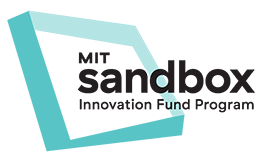MIT DHIVE catalyst
track
SUMMER 2022 MIT DHIVE Catalyst Track
The MIT DHIVE Catalyst Track, offered in partnership with MIT linQ’s Catalyst program, is a new and exciting internship opportunity need-driven biomedical technology innovation. Interns discover how unmet needs are identified and evaluated as innovation opportunities. Through this process, interns will assess the current solution landscape, identify gaps, assess the value of filling those gaps as the basis for developing student-led entrepreneurial opportunities. The partnership with MIT linQ’s Catalyst program provides a unique chance for interns to work within a strong international network of diverse experts from medicine, engineering, business, and healthcare. This DHIVE 2024 program track is now complete. Complete this form to be informed of the next DHIVE program HERE.
Summer 2022 Project Areas
DHIVE Catalyst interns can choose from the following project areas, to contribute to ongoing projects as well as identify new innovation opportunities.
Birth control and STIs
Unintended pregnancies and sexually transmitted infections (STIs) are increasing, despite public awareness campaigns. Condom use, shown to be an effective response, is hampered by negative perceptions of decreased pleasure and sexual performance. To increase condom use, the Barrier team focused on behavioral and user experience considerations and is developing a novel condom applicator that facilitates efficient, effective application and penile stimulation during condom placement.
Reducing the risk of opioid addiction
Low participation in drug disposal results in the accumulation of millions of unused opioid pills in the community, putting people at risk of addiction and adverse events. The opioid team aims to develop a pill bottle that automatically inactivates unused opioids, reducing the number of unused opioids available for misuse, abuse, and diversion.
Reducing medication errors
Medical documentation needs have increased with the widespread adoption of electronic health records in US hospitals. This increased administrative burden on doctors and nurses is one of the leading factors increasing burnout in both populations over the last few years. At the same time, medication errors continue to be a leading cause of patient harm in hospital settings. The medication administration documentation project is developing a system to automate the documentation of medication administration in ED settings--simultaneously decreasing the administrative work of documentation and improving patient safety by improving the documentation process.


